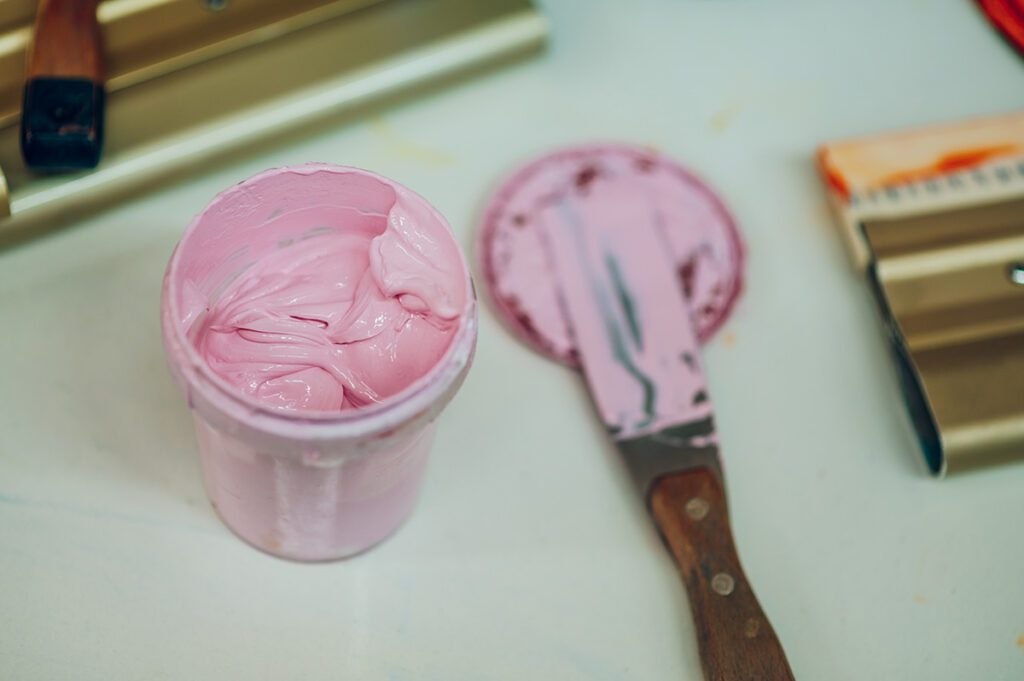As a screen printing professional, it’s crucial to understand how weather conditions can affect your printing process. Fluctuations in temperature and humidity can significantly impact the performance of your ink, emulsion, and overall print quality. In this article, we will explore the effects of extreme temperatures, high humidity, and provide valuable tips to prevent potential issues, ensuring top-quality prints regardless of the weather forecast.
Fighting the Effects of Extreme Temperatures In Your Screen Printing Shop
Extreme temperatures can present challenges during the screen printing process. It’s important to take the following precautions:
- Cold Weather Precautions for Screen Printing
- Store ink and emulsion in an insulated room, away from cold areas like the floor.
- Prioritize thorough mixing of inks before use to achieve the proper consistency.
- Avoid exposing ink to direct sunlight to prevent overheating.
- Hot Weather Precautions for Screen Printing
- Store ink away from hot areas, such as the highest shelves near the ceiling, to avoid excessive heat exposure.
- Keep ink and emulsion away from heat sources like flash cures or conveyor dryers.
- Adhere to the storage guidelines provided by the manufacturers to maintain optimal ink consistency.
Regularly monitor your shop conditions using an accurate thermometer to ensure suitable temperatures for your supplies and your employees.
Maintaining Comfortable Workspaces in Screen Printing Shops
Creating a comfortable work environment is crucial for maximizing productivity and achieving top-quality screen printing results. Weather conditions not only affect your printing supplies but also impact your employees. During extreme weather, it’s essential to prioritize their comfort. On hot days, providing air conditioning, fans, or open windows for a cool breeze can make a significant difference. However, it’s important to be cautious when positioning cooling equipment near the conveyor dryer, as it can interfere with the optimal curing temperature for your garments. By taking these steps, you can ensure that your employees work in a comfortable environment that promotes productivity while maintaining the quality of your screen printing.

Addressing Challenges of High Humidity in Screen Printing Shops
In addition to temperature, high humidity can pose specific challenges in the screen printing process. To overcome these difficulties, it is important to follow these recommendations.
Firstly, ensure complete drying in high humidity conditions. Before exposing the screens, allow the emulsion to dry thoroughly. If the emulsion remains tacky, it indicates that it is not ready for exposure.
Secondly, adjust the curing time for screen printing. Monitor your conveyor dryer settings closely to accommodate the increased curing time caused by high humidity. Keep in mind that cotton garments, which retain more moisture than synthetic materials, may require additional drying time on humid days. It is advisable to conduct test prints to determine the appropriate settings for achieving proper curing. By implementing these measures, you can overcome the challenges associated with high humidity and achieve optimal results in your screen printing process.
Controlling Humidity for Optimal Screen Printing Shops
While it may be challenging to avoid humid days entirely, you can take steps to minimize the negative effects of humidity. One way is to utilize a dehumidifier for screen printing. By installing a dehumidifier in your shop, you can effectively regulate humidity levels. It is crucial to ensure that humidity is controlled in all areas where screens are stored and prepared since screens are susceptible to humidity until exposure. Another important aspect is to monitor humidity levels using a hygrometer. This inexpensive device enables you to measure and maintain relative humidity below 50%, which helps preserve the integrity of your stencils. Additionally, maintaining lower humidity levels plays a role in protecting your equipment in screen printing. It helps prevent rusting of metal parts, ultimately extending the lifespan of your screen printing press and other equipment. By implementing these measures, you can minimize the adverse effects of humidity on your screen printing process and maintain the quality of your prints.
Take Away
Understanding how weather conditions impact screen printing is essential for achieving quality prints consistently. Temperature fluctuations and high humidity can have a significant influence on ink performance, emulsion consistency, and overall print quality. By following the tips and precautions provided in this article, you can mitigate the effects of extreme temperatures, maintain a comfortable workspace for your employees, and overcome the challenges of high humidity in screen printing. Utilizing dehumidifiers, monitoring humidity levels, and protecting your equipment are crucial steps to ensure optimal conditions for screen printing. By implementing these measures, you can minimize potential issues and achieve top-quality prints regardless of the weather forecast. Remember, a thorough understanding of weather conditions and their impact is key to delivering outstanding results in the screen printing industry.
- Pantone Colors Demystified: A Complete Screen Printers Guide
- Which Is More Profitable - DTF Printing or DTG Printing?
- DTF Printers: How To Thank Customers Like A Pro | DecoNetwork
- How To: Navigate Screen Printing Copyright Laws
- How To Break Up With A Customer: A Guide For Printing Businesses
- 5 Niche Strategies For DTF Printing Businesses
- The Perfect Online Product Description: A Screen Printer’s Guide
- The Perfect Online Product Description: A Screen Printer’s Guide
- Screen Printing Pricing Strategies: A Practical Guide
- RGB vs. CMYK: A Comprehensive Comparison For DTG Printers




